(!)NOTE : Windows 7 users won’t be able to use some latest features of eCatalog/WOS since Microsoft is ending support for Windows 7 on 14 Jan, 2020. Please upgrade your system for uninterrupted services.
- Notice of End of Sales for Economy Series Pneumatic Equipment Category. More information.
Space Saving Bolts(Material:Brass)
Space Saving Bolts is a practical solution designed for machine in factory automation. These bolts are crafted to solve the challenge of limited space. Available in different styles like low head, extra low head, and ultra-low head, they're like tools to help you fit parts into tight spots without making them weak. These bolts can be selected in different head shapes for mounting like hex socket, Phillips, or hexalobular socket drives. By using our Space Saving Bolts, you're making your workspace smarter and more organized. They're perfect for when you need to fit machines into small areas or set up efficient conveyor systems. When you use these bolts, you're not just fastening things together – you're creating a clever solution that makes the best use of the space available. Our Space Saving Bolts are the secret to making your factory automation projects efficient and effective. Give them a try and see how they help you build smarter designs in even the tightest spaces.
Brand |
|
|---|---|
| CAD |
|
| Days to Ship |
|
1 items
- Sort By
-
You can add up to 6 items per a category to the compare list.
![[Clean & Pack] Extra Low Head Hex Socket Head Cap Screw - Single Item](//content.misumi-ec.com/image/upload/f_auto,q_auto,t_product_view_b/t_misumi_wm/v1/p/jp/product/series/110310663209/110310663209_001_20230911105917.jpg?$product_view_b$)
[Clean & Pack] Extra Low Head Hex Socket Head Cap Screw - Single Item
MISUMI
Three types of cleaning methods are available: degreasing, precision cleaning, and electrolytic polishing + precision cleaning. They can be ordered from one piece with the standard part number.
This eliminates the need for customer cleaning or outsourced cleaning, reducing the amount of time and effort required.■Part Number for Clean & Pack Products·Degreasing (Anti-rust single packing) : Part Number SL-□□ ·Precision cleaning (Degassing double packing) : Part Number SH-□□ ·Electrolytic polishing + precision cleaning (Degassing double packing) : Part Number SHD-□□ Product Part Number Cleaning Method Packaging Type Effects Compared to Uncleaned Product Environment (Standard) Process SL-□□ Degreasing Anti-rust packing Oil removal General environment Regular assembly process Post battery assembly process SH-□□ Precision cleaning Degassing double packing Oil removal
Dust removalClean environment (Class 10 to 1,000) Battery assembly process LCD-related post assembly process In-vehicle camera assembly process SHD-□□ Electrolytic polishing + precision cleaning Degassing double packing Oil removal
Dust removal
Outgas reductionVacuum environment
Clean environment (Class 10 to 1,000)Pre-semiconductor process Liquid crystal deposition process Pre-OLED process ■Notes
Cleaning also removes rust prevention oil, which may make the product more susceptible to rusting than an uncleaned product.
Please be careful about the application location and storage environment.- Volume Discount
Nominal of Thread (M) Length L(mm) Detailed Shape Mounting Hole Shape Material Sales Unit Pitch(mm) Basic Shape SurfaceTreatment Thread Type Strength Class (Steel) Additional Shape Application Strength Class (Stainless Steel) Cleaning Method Characteristics/Applications Material Details Environmentally friendly 2 ~ 10 3 ~ 30 Extra Low Head - Brass Low Quantity (Available beginning with 1 pc.) 0.4 ~ 1.5 Standard (Round) - Metric, Coarse - - Standard / Heat Resistance / Chemical Resistance - Precision Cleaning / Electrolytic Polishing + Precision Cleaning / Degreasing - - - From: ₹ 308.38 Days to Ship: 10 Day(s) or more  10 Day(s) or more
10 Day(s) or more
| Brand |
|---|
| Product Series |
| CAD |
| From |
| Days to Ship |
| Nominal of Thread (M) |
| Length L(mm) |
| Detailed Shape |
| Mounting Hole Shape |
| Material |
| Sales Unit |
| Pitch(mm) |
| Basic Shape |
| SurfaceTreatment |
| Thread Type |
| Strength Class (Steel) |
| Additional Shape |
| Application |
| Strength Class (Stainless Steel) |
| Cleaning Method |
| Characteristics/Applications |
| Material Details |
| Environmentally friendly |
You can add up to 6 items per a category to the compare list. | |
| Brand | MISUMI |
| Product Series | [Clean & Pack] Extra Low Head Hex Socket Head Cap Screw - Single Item |
| CAD |
|
| From | ₹ 308.38 |
| Days to Ship | 10 Day(s) or more |
| Nominal of Thread (M) | 2 ~ 10 |
| Length L(mm) | 3 ~ 30 |
| Detailed Shape | Extra Low Head |
| Mounting Hole Shape | - |
| Material | Brass |
| Sales Unit | Low Quantity (Available beginning with 1 pc.) |
| Pitch(mm) | 0.4 ~ 1.5 |
| Basic Shape | Standard (Round) |
| SurfaceTreatment | - |
| Thread Type | Metric, Coarse |
| Strength Class (Steel) | - |
| Additional Shape | - |
| Application | Standard / Heat Resistance / Chemical Resistance |
| Strength Class (Stainless Steel) | - |
| Cleaning Method | Precision Cleaning / Electrolytic Polishing + Precision Cleaning / Degreasing |
| Characteristics/Applications | - |
| Material Details | - |
| Environmentally friendly | - |
Loading...
Configure
Specification/Dimensions
-
Nominal of Thread (M)
-
Length L(mm)
-
Detailed Shape
-
 Low Head
Low Head -
 Extra Low Head
Extra Low Head -
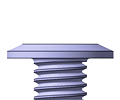 Ultra Low Head
Ultra Low Head -
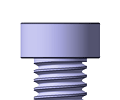 Low Small Head
Low Small Head
-
-
Mounting Hole Shape
-
 Hex Socket
Hex Socket -
 Phillips
Phillips -
 Not Provided
Not Provided -
 Hexalobular Socket
Hexalobular Socket
-
-
Material
-
Sales Unit
-
Pitch(mm)
-
Basic Shape
-
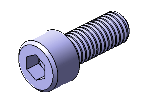 Standard (Round)
Standard (Round) -
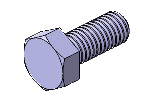 Hex
Hex
-
-
SurfaceTreatment
- Not Provided
- Black Oxide Film
- Black Oxide
- Electroless Nickel Plating
- Chromium free
- Trivalent Chromate
- Bright Chrome Plating
- Hot Zinc Plating
- Chromate Plating
- Nickel Plating
- Black Nickel Plating
- Chrome Plating
- Parkerizing
- Raydent
- Stainless Steel Coating
- Copper Plating
- Tin Plating
- Black Paint
-
Thread Type
- Metric, Coarse
-
Strength Class (Steel)
-
Additional Shape
-
 Standard
Standard -
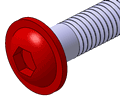 Flanged
Flanged -
 With Through Hole
With Through Hole
-
-
Application
-
Strength Class (Stainless Steel)
-
Cleaning Method
- Degreasing
- Precision Cleaning
- Electrolytic Polishing + Precision Cleaning
- No Cleaning
-
Characteristics/Applications
-
Material Details
- SUSXM7
- SUS304 Equivalent
-
Environmentally friendly
- RoHS Compliant (10 Substances)
Related Categories to Space Saving Bolts
-
- Cross Recessed Bolts
- Micro Screws, Pan Head Machine Screws for Precision Instruments
- Screws with Captured Washer
- Self Tapping Screws, Taptite High Tech Screws
- Self-Drill Screws
- Tamper Proof Button Head Cap Screws
- Hex Screws
- Hex Socket Head Cap Screws
- Space Saving Bolts
- Small Screws
- Screws with Through Hole
- Hex Socket Button Head Cap Screws
- Hex Socket Flat Head Cap Screws
- Unified screw, Inch screw
- Hex Socket Set Screws
- Fully Threaded, Stud Bolts
- Knurled Wing Screws
- Square bolts
- Plastic Screws
- Cover Screws
- Strippers, Reamer Bolts
- I-Bolts, U-Bolts for Plumbing
- U-Bolts
- Fastening Related Components
- Bolt
-
FAQ Space Saving Bolts
- Question: How does a space-saving (low head cap screw/low profile) bolt differ from a traditional bolt?
- Answer: A space-saving bolt, unlike a traditional bolt, is designed to minimize the amount of space it occupies while maintaining secure fastening. It is often smaller, sleeker, and streamlined, making it suitable for tight or limited spaces. Traditional bolts have a standard design and size, which may be bulkier. The unique construction of space-saving bolts ensures efficient and effective fastening without compromising on strength or stability.
- Question: In what types of projects or applications are space-saving bolts (low head cap screw/low profile) most beneficial?
- Answer: Space-saving bolts are highly advantageous in projects with limited room for traditional fasteners. They excel in compact installations like electronics, machinery, and furniture assembly. Their reduced size and efficient design enable secure connections without occupying excess space, making them particularly beneficial in applications where optimizing space utilization is crucial.
- Question: Are there specific tools needed to install space-saving bolts (low head cap screw/low profile)?
- Answer: Installing space-saving bolts is straightforward and doesn't require specialized tools. These bolts are designed to be user-friendly, and you can typically use common tools like wrenches or screwdrivers. Depending on the type of space-saving bolt and its drive style (hex socket, Phillips, hexalobular socket), you might need a matching tool for proper installation. However, these tools are commonly available and easy to use. Always refer to the manufacturer's guidelines for the recommended tools and techniques specific to the type of space-saving bolt you're working with.
- Question: How do I maintain or inspect space-saving bolts (low head cap screw/low profile) after installation?
- Answer: Regularly inspect space-saving bolts post-installation. Check for proper alignment, secure attachment, and any signs of wear or corrosion. Tighten if necessary, following manufacturer guidelines. Lubricate moving parts to ensure smooth operation. Address any anomalies promptly to prevent potential hazards or degradation.
![[Clean & Pack] Extra Low Head Hex Socket Head Cap Screw - Single Item](http://content.misumi-ec.com/image/upload/f_auto,q_auto,t_product_view_b/t_misumi_wm/v1/p/jp/product/series/110310663209/110310663209_001_20230911105917.jpg?$product_view_b$)
![[Clean & Pack] Extra Low Head Hex Socket Head Cap Screw - Single Item](http://content.misumi-ec.com/image/upload/f_auto,q_auto,t_product_view_c/t_misumi_wm/v1/p/jp/product/series/110310663209/110310663209_001_20230911105917.jpg?$product_view_c$)
















How can we improve?
How can we improve?
Thank you for your time.
Your feedback is essential for our continuous improvement
Privacy Policy
Thank you for your cooperation.
Thank you for your time.
Your feedback is essential for our continuous improvement
Please use the inquiry form.
Privacy Policy